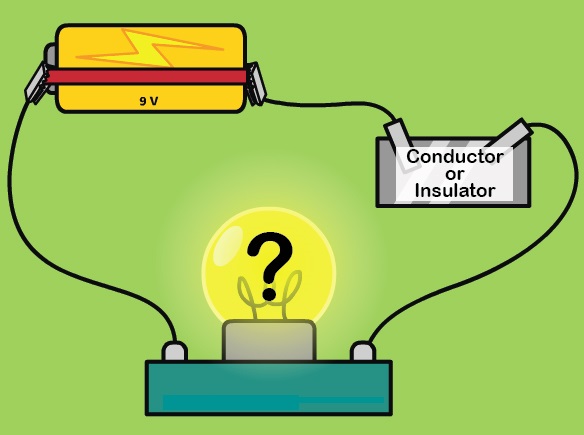
The actual size and shape of these regions is determined by the high-powered mathematical equations common to Quantum Mechanics. The electrons surrounding the nucleus of an atom are believed to be located in regions of space with specific shapes and sizes.
To understand the electron redistribution process, it is important to take another brief excursion into the world of atoms, molecules and chemical bonds. In an insulator, electrons merely redistribute themselves within the atom or molecules nearest the outer surface of the object. In a conducting object, electrons are induced into movement across the surface of the conductor from one side of the object to the opposite side. Polarization can occur within insulators, but the process occurs in a different manner than it does within a conductor. How can an insulator such as a wooden wall be polarized?
Conductor definition physics free#
But what if the object being polarized is an insulator? Electrons are not free to move across the surface of an insulator. Being a conductor, electrons were capable of moving from atom to atom across the entire surface of the conductor. In the above diagram and accompanying discussion, electrons within a conducting object were induced into moving from the left side of the conducting can to the right side of the can. The polarization process always involves the use of a charged object to induce electron movement or electron rearrangement. By inducing the movement of electrons within an object, one side of the object is left with an excess of positive charge and the other side of the object is left with an excess of negative charge. The positive charge becomes separated from the negative charge. In the context of electricity, polarization is the process of separating opposite charges within an object. That is, the citizens of the United States have been separated into opposites - those who are for the death penalty and those who are against the death penalty. For instance, we might say that the United States has become polarized over the issue of the death penalty. In the political world, we often observe that a collection of people becomes polarized over some issue. In general terms, polarization means to separate into opposites. We say that the charge in the can has been polarized. Overall the can is electrically neutral it's just that the positive and negative charge has been separated from each other. The two sides of the aluminum pop can have opposite charges. And the atoms on the side opposite of the can have an excess of electrons they become negatively charged. This electron movement leaves atoms on the balloon's side of the can with a shortage of electrons they become positively charged. As such, there is a mass migration of electrons from the balloon's side of the aluminum can towards the opposite side of the can. Being present within a conducting material, the electrons are free to move from atom to atom. Many of these electrons will be induced into moving away from the repulsive balloon. The repulsion will be greatest for those electrons that are nearest the negatively charged balloon. If the negatively charged balloon is brought near the aluminum pop can, the electrons within the pop can will experience a repulsive force. A rubber balloon is charged negatively, perhaps by rubbing it against animal fur. The Styrofoam cup serves as both an insulating stand and a handle. To illustrate this induced movement of electrons, we will consider an aluminum pop can that is taped to a Styrofoam cup.

To get an electron in a conducting object to get up and go, all that must be done is to place a charged object nearby the conducting object. In conducting objects, they are so loosely bound that they may be induced into moving from one portion of the object to another portion of the object. Relative to the protons of the nucleus, these electrons are loosely bound. The electrons are located in the vast regions of space surrounding the nucleus, known as the electron shells or the electron clouds. The protons are in the nucleus of the atom, tightly bound and incapable of movement. Quite surprisingly, this interaction between a neutral object and any charged object can be explained using our usual rules of opposites attract and likes repel.Īs discussed previously, an atom consists of positively charged protons and negatively charged electrons.

If a rubber balloon is charged by rubbing it with animal fur, the balloon can subsequently be stuck to the surface of a wooden cabinet or a whiteboard. If a charged plastic tube is held near to neutral paper bits, the attraction between the paper and the plastic would be sufficient to raise the paper off the table. In an earlier section of Lesson 1, it was stated that an electrical attraction would be observed between a charged object and a neutral object.


 0 kommentar(er)
0 kommentar(er)
